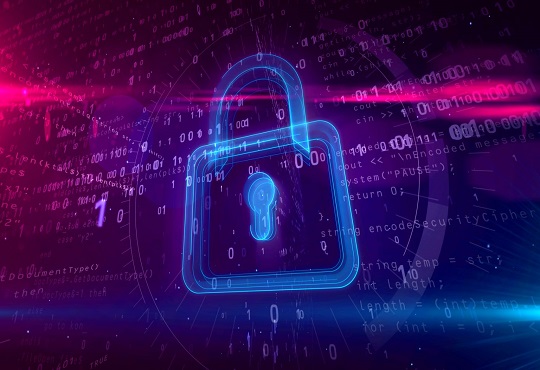
How Cybersecurity Mesh Can Secure IT infrastructure
Janifha Evangeline | Friday, 03 December 2021, 04:31 IST

Although fully centralized IT networks may be a thing of the past, most organizations are still holding on to their old ways. Furthermore, it is difficult for larger enterprises with complex IT architectures that include banks, heavy manufacturing industries as well as government companies to keep pace with a more distributed model. Modern architectures in the present era are pushing more data processing to the edge, and most companies have started to rely on multiple cloud implementations & data centers in order to run their businesses smoothly.
When it comes to cybersecurity, such types of organizations should also change their thinking and adapt to a newer approach which is known as the “cybersecurity mesh”. As defined by Gartner, “the cybersecurity mesh is a distributed architectural approach to scalable, flexible and reliable cyber control.” What happens is that the focus is changed here from protecting a traditional IT perimeter to a more modular approach by the mesh which centralizes policy orchestration however distributes enforcement of cyber security policy.
In this scenario what IT departments can do is that they can create smaller & individual perimeters which protect distributed access points that allow network managers to provide diverse levels of access to various constituents & assets and thereby making it difficult for cybercriminals as well as hackers to exploit an entire network.
Zero-trust strategy
The cybersecurity mesh is one of the most important components of a zero-trust network philosophy, where any device is not trusted in other words not allowed to access the broader network, by default. Most often Perimeter-focused security fails since as much as thirty-four per cent of data leaks & breaches begin from the inside of the network itself.
While a distributed cybersecurity mesh that utilizes zero trust adapts to emerging threats & changing access requirements, threats may be detected in real-time & assets that include data & devices could be protected better rather than using simple VPN passwords. The mesh makes sure that all data, systems as well as equipment are treated equally as well as securely and it does not matter where they are located, whether in or out of the network. Furthermore, any connection to access data is considered “unreliable” by default, until it has been verified by the security protocol.
Protecting Applications & IT Services
The concept of a service mesh is becoming popular when it comes to rolling out large-scale applications in an enterprise environment and organizations are deploying microservices largely. Protecting such applications in a cybersecurity mesh provides more efficiency as well as transparency to the process. This can further be combined with a zero-trust strategy in order to harden the security posture.
Impact of the cybersecurity mesh
“Despite the growing number of cyberattacks, many companies often underestimate their cyber risks. The banking and financial services sector (BFSI) is often considered the most sensitive to cyberattacks due to the financial assets and sensitive information involved. Cybercriminals, however, don’t just aim to steal money from their targets. Besides financial gains, the motives behind cyberattacks can include theft of personal or business information, theft of intellectual property, hijacking or disruption of critical assets, conducting cyber espionage, nation-state attacks, and more,” says Akshat Jain, Co-Founder, Cyware Labs.
In order to allow devices to get access to a network, as well as manage access levels, internally, the older cybersecurity models were implemented to create password-protected perimeters. However, the cybersecurity mesh approach is a complete reconfiguration of the process, for IT development. It integrates numerous measures in the development process of the network.
Benefits of Cybersecurity Mesh
More than fifty per cent of IAM requests will be supported by Cybersecurity mesh: Today most devices, digital assets, & identities exist outside of the organization that has resulted in complicating traditional security models. According to Gartner, a majority of the IAM requests will be supported by cybersecurity mesh and this will help in enabling a more explicit as well as mobile & adaptive unified access management model. The major advantage of this model is that organizations would obtain a more scalable, integrated, reliable as well as flexible approach to digital asset access points & control than the traditional security perimeter protection.
Delivery of IAM services would result in an increase in MSSPs (managed security service providers): Organizations can be provided with quality resources as well as necessary skillsets to plan, develop, acquire & implement comprehensive IAM solutions by managed security service providers. According to Gartner, by 2023, forty per cent of IAM application convergence will be driven by managed security service providers, primarily, who focus on providing best-of-breed solutions using an integrated approach. And, this process will lead to the shift of influence to service partners from product vendors.
CIO Viewpoint
From VPNs to Zero Trust: The Transition to a...
By Shankar Venkatesan, Senior IT Leader, Avalon Technologies
The Cyber Security Spar in Integrating IT and...
By Vimal Goel, CIO, HPCL-Mittal Energy
Towards Cyber Resilience: A Data-Centric...
By Puneet Gupta, Vice President & Managing Director, NetApp India/SAARC
CXO Insights
Emerging Trends, Challenges & Future Prospects...
By Sujoy Brahmachari, CIO & CISO, Rosmerta Technologies
Exploring Data-First Security and Automation in...
By Maheswaran S, Country Manager - S.Asia, Varonis Systems
Securing IT-OT Converged Infrastructure




.jpg)
.jpg)
.jpg)







